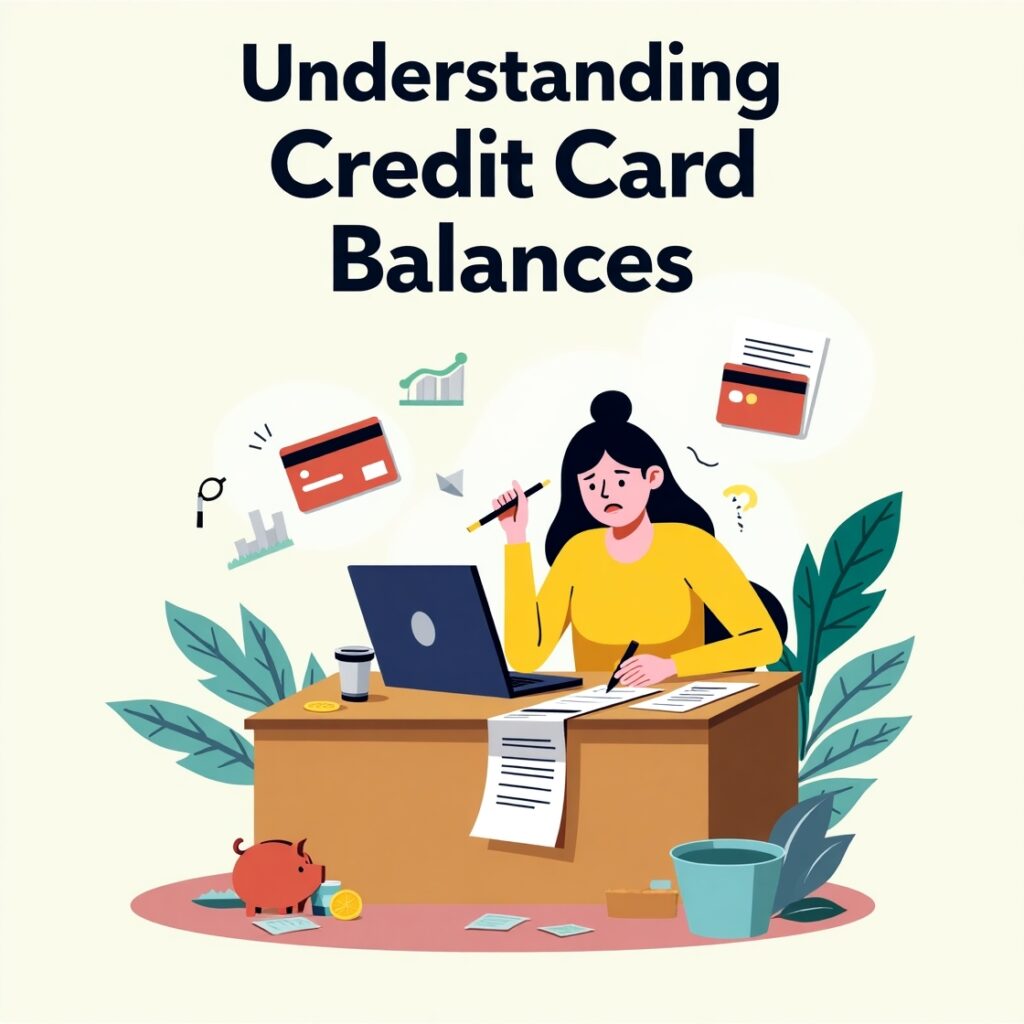Managing your finances smartly begins with understanding the small things that add up to big impacts—and one of the most important of these is your credit card balance. Whether you’re looking into a debt consolidation loan or simply want to improve your financial health, understanding how your credit card balance works can be the first step to long-term stability.
In fact, many people exploring debt consolidation options are doing so precisely because of mounting credit card balances. This feature of credit cards can be both a convenience and a burden, depending on how you handle it. But don’t worry—this guide will explain everything in a human-friendly and insightful way.

What Is a Credit Card Balance?
A credit card balance is the total amount of money you owe to your credit card issuer at any given time. It includes purchases, cash advances, interest charges, fees, and any unpaid amount carried over from the previous month.
There are a few types of balances you might encounter:
- Current Balance: The amount you owe now, including recent transactions.
- Statement Balance: The total due at the end of the billing cycle.
- Minimum Payment: The least amount you need to pay to stay in good standing.
Understanding these balances helps you manage your credit wisely, avoid high interest costs, and improve your credit score over time.
How Credit Card Balances Work
When you make a purchase using your credit card, that amount is added to your credit card balance. If you pay the full credit card balance before the due date, you typically avoid interest charges. However, if you only make a partial payment or the minimum payment, the remaining balance rolls over and begins to accrue interest—often at rates above 20% APR.
Some cards also charge interest on new purchases if you’re already carrying a balance, which makes things even more expensive. This is why understanding how your credit card balance evolves over time is essential to prevent a snowballing debt situation.
How to Apply for a Credit Card (The Right Way)
If you don’t already have a credit card and you’re considering one, you’ll need to apply through a bank or financial institution. Here’s how to do it strategically:
- Check Your Credit Score: Your credit score affects your approval chances and interest rates.
- Compare Cards: Look for cards with low interest rates, no annual fees, and rewards if possible.
- Apply Online or In-Branch: You’ll provide income information, employment details, and consent for a credit check.
- Get Approved: If you meet the criteria, you’ll be approved and issued a credit limit.
Always start with one manageable card and learn how credit card balances work before diving in deeper.
The Benefits of Managing Credit Card Balances Wisely
There are multiple advantages to understanding and managing your credit card balances effectively:
1. Better Credit Score
Your credit utilization ratio—how much of your available credit you’re using—is a major factor in your credit score. Keeping your credit card balances low (preferably under 30% of your limit) boosts your score.
2. Reduced Interest Payments
By paying your statement balance in full each month, you avoid interest entirely. That’s money back in your pocket every single billing cycle.
3. Financial Flexibility
Using your credit card wisely gives you the flexibility to make larger purchases in emergencies while keeping your cash intact.
4. Reward Points & Cash Back
Many cards offer points, travel miles, or cash back—but you’ll only come out ahead if you avoid carrying a high credit card balance.
The Risks of Carrying a High Credit Card Balance
While credit cards offer convenience, mismanagement can lead to several downsides:
1. High Interest Accumulation
Interest rates on revolving credit card balances are notoriously high. Even a $1,000 balance can spiral into thousands in interest if not paid off over time.
2. Lower Credit Score
Maxing out your cards or carrying a high balance hurts your credit score. This can affect your ability to secure a mortgage, rent an apartment, or even land a job.
3. Debt Trap
If you’re only making minimum payments, your balance hardly moves. This creates a cycle of debt that’s difficult to escape—one reason why many turn to debt consolidation loans.
4. Emotional Stress
Constantly thinking about debt can take a mental toll. Managing your credit card balance gives you peace of mind and a sense of control.
Smart Strategies for Managing Your Credit Card Balances
If you’re already carrying a balance, it’s not too late. Here are a few smart ways to regain control:
- Pay More Than the Minimum: Always try to pay more than the minimum payment to reduce principal faster.
- Snowball or Avalanche Method: Use these debt repayment strategies to tackle multiple credit card balances systematically.
- Balance Transfer Cards: Some cards offer 0% interest for 12–18 months, allowing you to pay off high-interest debt without added interest.
- Debt Consolidation Loans: A personal loan with a lower interest rate can be used to pay off high-interest credit card balances.
Final Word on Credit Card Balances
While credit cards can be a powerful financial tool, they require discipline. By keeping your credit card balance in check, paying bills on time, and using smart repayment strategies, you can enjoy the benefits of credit without falling into the debt trap.
Whether you’re new to credit or looking to correct past mistakes, understanding your credit card balances is one of the most empowering financial decisions you can make.
Would you like me to turn this into a visual infographic, carousel post, or something specific for your website like a landing page or downloadable guide?

1 thought on “Understanding Credit Card Balances”
Comments are closed.